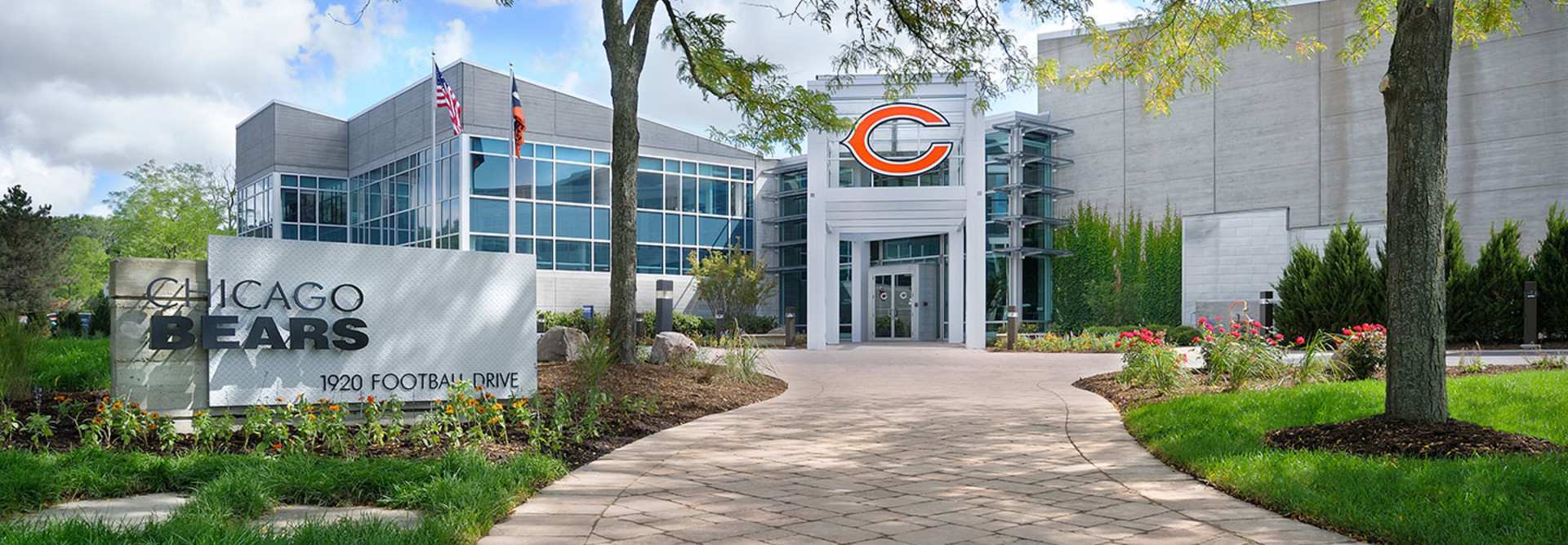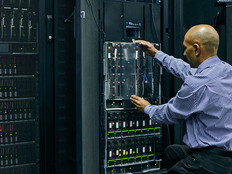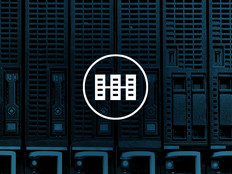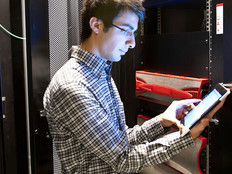How the Chicago Bears Updated Their IT via Hyperconvergence
The Chicago Bears’ recent investment in the future of on-the-field talent has been well-documented. A year after drafting talented running back Jordan Howard, Chicago shored up arguably the most important position in sports by drafting quarterback Mitch Trubisky No. 2 overall in 2017.
However, the National Football League franchise did more than just upgrade its roster this year. Behind the scenes, the Bears were thinking about long-term growth as well when they invested in new data center technology by deploying hyperconverged infrastructure from Nutanix.
Hyperconverged infrastructure — virtualized compute, storage and networking in a single appliance, all pre-integrated and controlled by one management layer — gives the pro football franchise more IT resources that are flexible and scalable.
“We sleep better at night now that we’re not running out of infrastructure resources,” says Justin Stahl, vice president of IT for the Bears.
Stahl has been with the Bears for about a year and a half and runs a staff of nine (and one intern). The shift to hyperconvergence has been part of the team’s organization-wide IT refresh, which includes moving to the cloud via Microsoft’s Office 365 platform.
Bears See a Need to Upgrade IT Systems
Stahl had previously worked with the Bears as a consultant for Accenture, and helped assess and build out the club’s technology strategy and application portfolio. “One thing led to another [and] here I am now running the IT department for the club,” he says. He noted that his “bluff got called a little bit” and now he is in charge of implementing many of the recommendations he developed as a consultant.
Stahl decided to look at every app the Bears use, from their Microsoft applications to their help desk, customer relationship management and financial systems and assess whether there was a Software as a Service cloud model for those apps. Some apps would need to stay on-premises for added security.
The Bears, with a small IT team, needed to focus on their strengths, especially engaging their loyal fan base in the Chicagoland area and providing a great game day experience, Stahl says.
Stahl decided that the franchise needed to “optimize the bandwidth” of its staff members so they could focus on those core areas and outsource IT management where it could. In March 2017, that led the Bears to start working with CDW on ways to make the club’s IT infrastructure team more effective, according to Ken Viggiano, a data center solution architect who worked with Stahl and the Bears on the Nutanix upgrade.
The Bears were running a legacy three-tier infrastructure system and were running out of resources, especially memory and capacity. The technology logjams got so bad that the team did not have enough resources to host an on-premises SharePoint site. That hindered collaboration for the team to the point that staff members could not use SharePoint to book a conference room.
The Bears upgraded to SharePoint Online and added internal collaboration tools such as Skype for Business, leveraging the close relationship the National Football League has with Microsoft. However, the shift to Nutanix was a major upgrade.
Bears Decide to Virtualize Data Center Infrastructure
The Bears decided to partner with CDW as they planned for an infrastructure refresh. “We don’t have the resources or even just capacity or bandwidth here to do a full-on infrastructure refresh,” from the design phase onward, Stahl says. “We used CDW to help us plan for that.”
CDW provided the Bears with numerous hyperconvergence options, according to Viggiano, and went through some whiteboarding sessions to determine the Bears’ technology needs. CDW also went through their data center methodology and helped the Bears determine the team’s three-to-five-year technology roadmap, according to Viggiano.
The team knew which workloads and virtual machines would stay on-premises and which would be migrated to the cloud, Stahl adds.
“Working with CDW, it was really quick,” Stahl says. “And I think that was one of the things that impressed us, definitely, and it’s why we’ll continue to work with them.” The work with CDW was not a “long, drawn-out assessment project where they told us something we already knew,” Stahl says. “It was very much actionable right away.”
After hearing about multiple options, the Bears chose Nutanix, which Stahl described as a “market leader,” noting that its HCI platform can last for the next three to five years. The Bears have been pleased with Nutanix’s support model and its cultural fit.
The Bears had to migrate 70 virtual machines and CDW helped install the infrastructure and supported the data migration, Viggiano says. The Bears decided to deploy one HCI cluster at their headquarters and practice facilities at Halas Hall in Lake Forest, Ill., and another one at the team’s training camp facility in Bourbonnais, Ill. It took about six hours to install the infrastructure and CDW engineers came back the next day to finish the installation and show team staff how to use the equipment, Viggiano notes.
“It was shockingly simple,” Stahl says. Before the installation, Nutanix and CDW professionals reiterated that the HCI platform “just works,” which made Stahl a little wary. However, he says, “I’ve got to hand it to them, it really did.”
The Nutanix platform is more efficient and easier to manage than legacy infrastructure, Viggiano notes, giving Chicago’s IT staff more visibility into its data center operations. “You know what’s happening instead of guessing,” he says.
Viggiano says that the Nutanix platform not only gives Stahl and his staff peace of mind at night that they have enough IT resources, but it also allows them to come in during the day and execute their plans. “Instead of taking a month to do something, you can do it in a couple of hours,” Viggiano says.
Unlike many professional football teams, the Bears do not own their own stadium and Stahl said the franchise isn’t currently involved in as many business endeavors as some other teams. “From a business perspective, I don’t know exactly what the next 20 years hold for the Bears,,” he says. “but I feel confident for the life of this infrastructure, anyway. We can meet any demand that would come our way pretty easily.”









